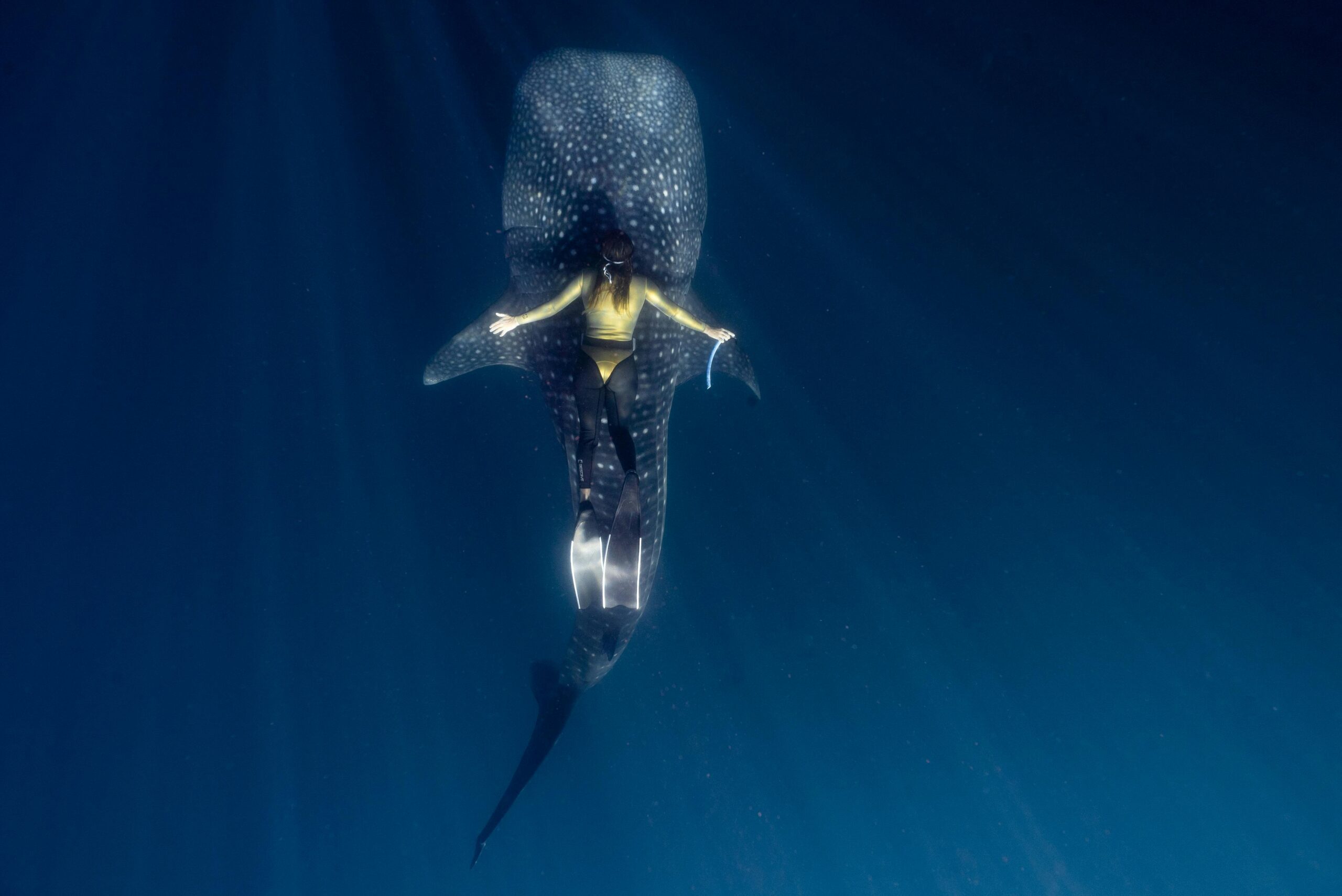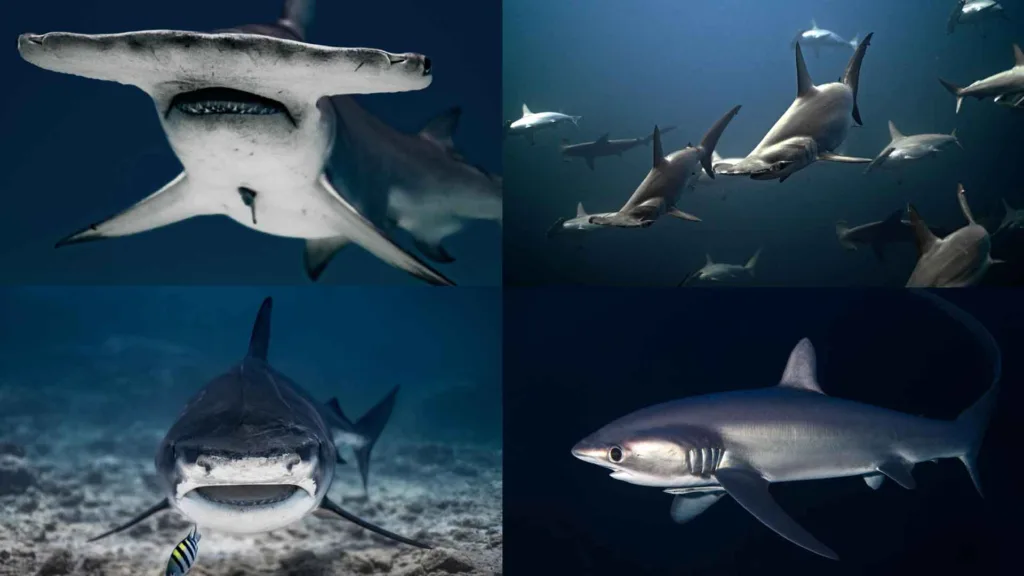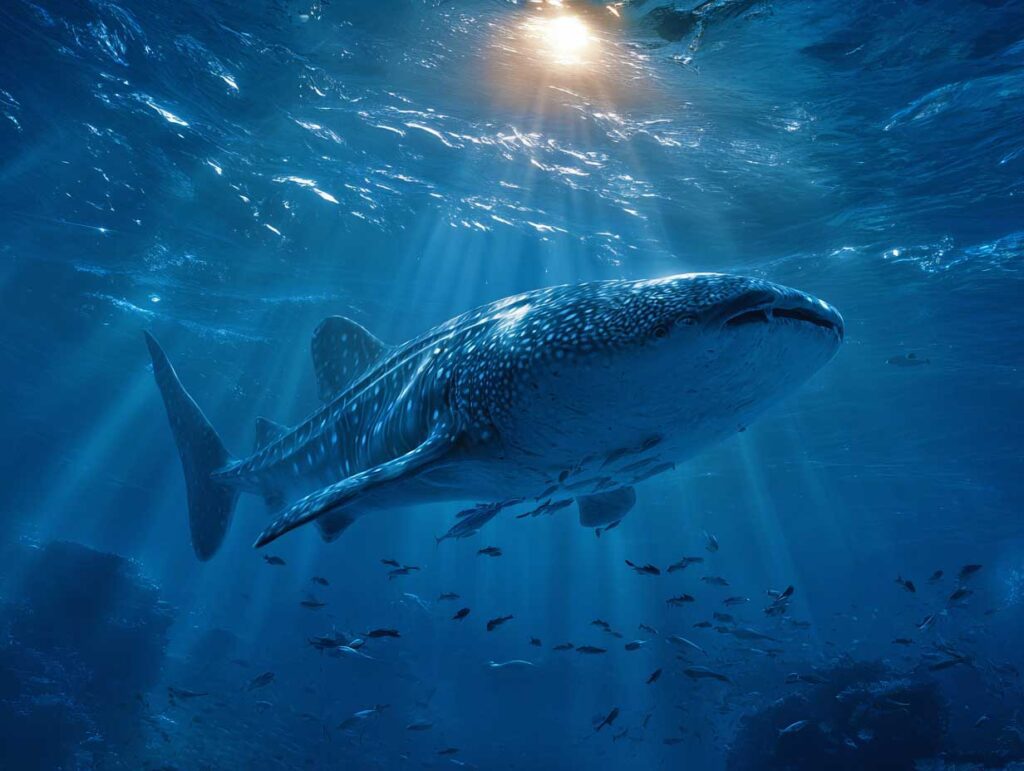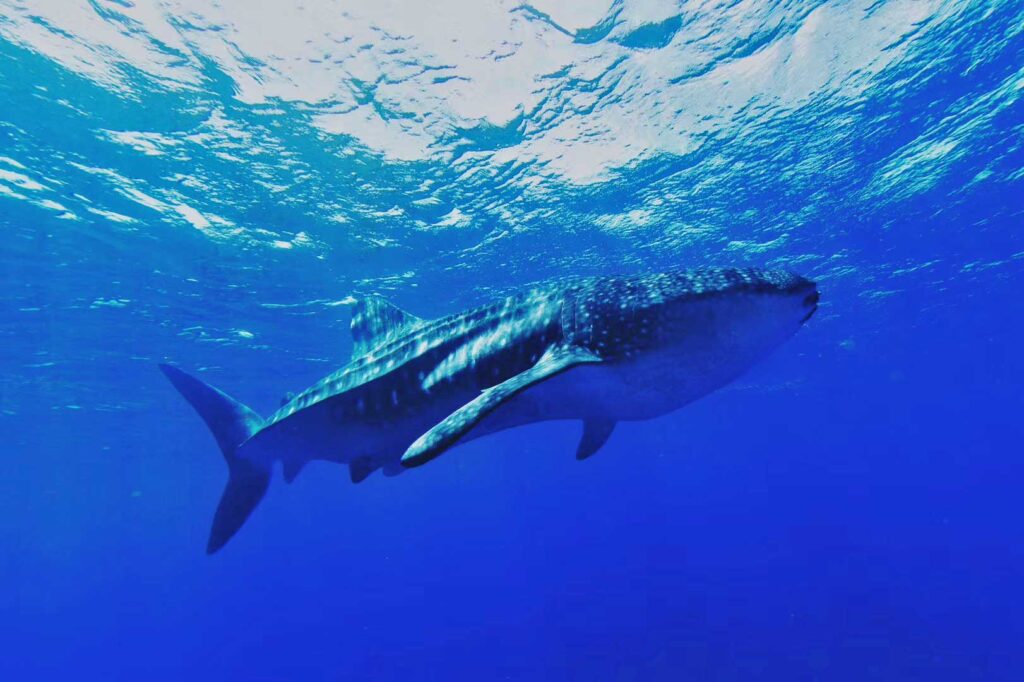
Photo credit: Elianne Dipp
The whale shark is one of the most majestic fish that live in the ocean. They are called Rhincodon typus. They reach over 18 m. In 1995, a pregnant female whale shark was caught off the coast of Taiwan. The length of the whale was 10.6 m. The fish had 304 embryos (Jong et al. 1996, Leu et al. 1997) or a belly full of over 300 babies. The embryos were in different stages of development.
This was the highest number of embryos found in a whale shark. Some embryos were in the eggs. The others were emerging and were in the uterus. This indicated that females are able to store a male’s sperm and fertilize the eggs over a prolonged period. This specimen was nicknamed “megamamma supreme.” Scientists carried out an analysis and concluded that whale sharks are viviparous (ovoviviparous), meaning females give birth to live young that hatch internally.
Scientists carried out the analysis of the embryos. They found that the embryos were of different sizes. Some of them were 42 cm and others were 64 cm and were freely living in the uterus (Joung et al. 1996, Chang et al. 1997, Leu et al. 1997). This whale was named Megamamma Supreme.
This encounter and the birth of a litter established the fact that embryos hatch from eggs in female whales (Scmidt, Chen, Sheikh, Meekan, Norman, Joung, 201) and knew that whale sharks are ovoviviparous. The term describing females giving birth to young ones. Although two additional whales were caught from waters off China. The two whales were pregnant. One whale had 16 embryos and the other had 200 eggs (Compangno 2001). However, no information is available about these two whales. Hence, the whale caught near Taiwan is the only documented species that was in the reproductive stage and embryonic development.




